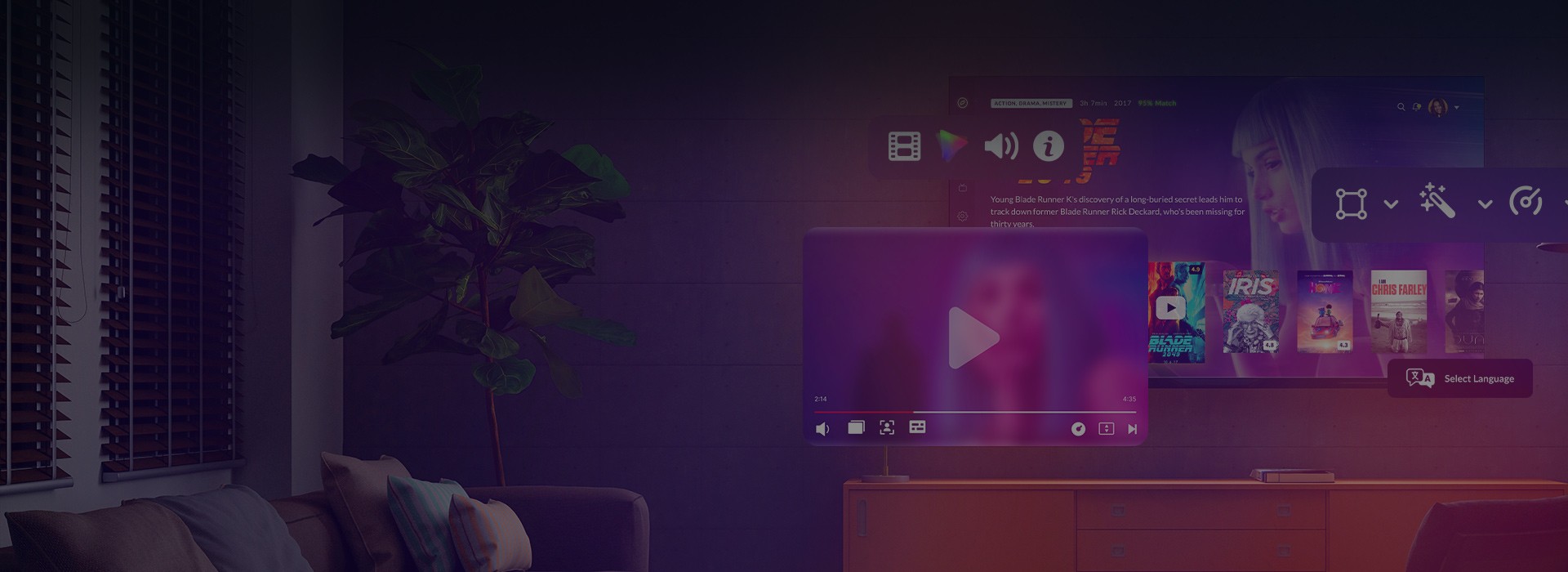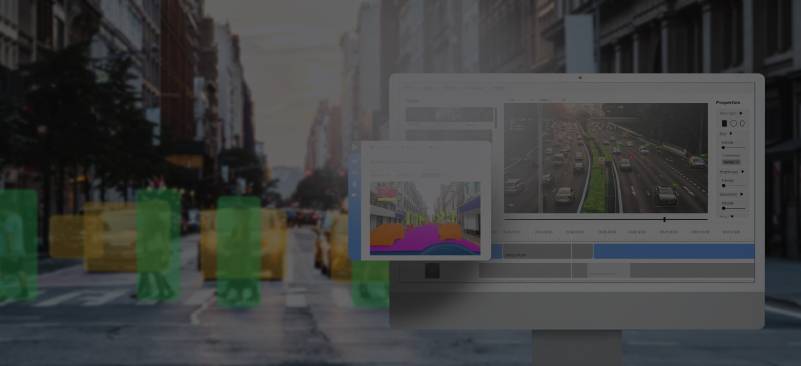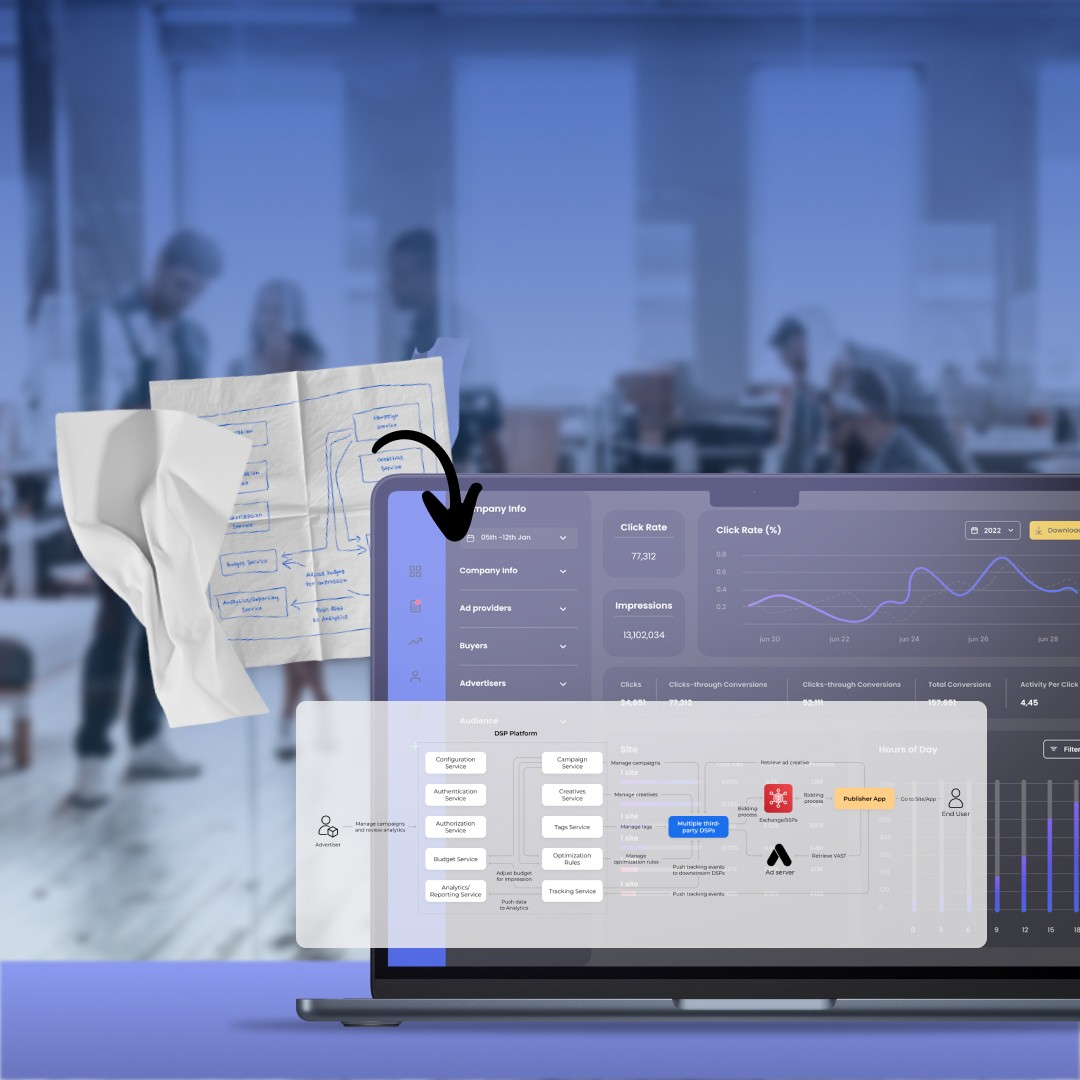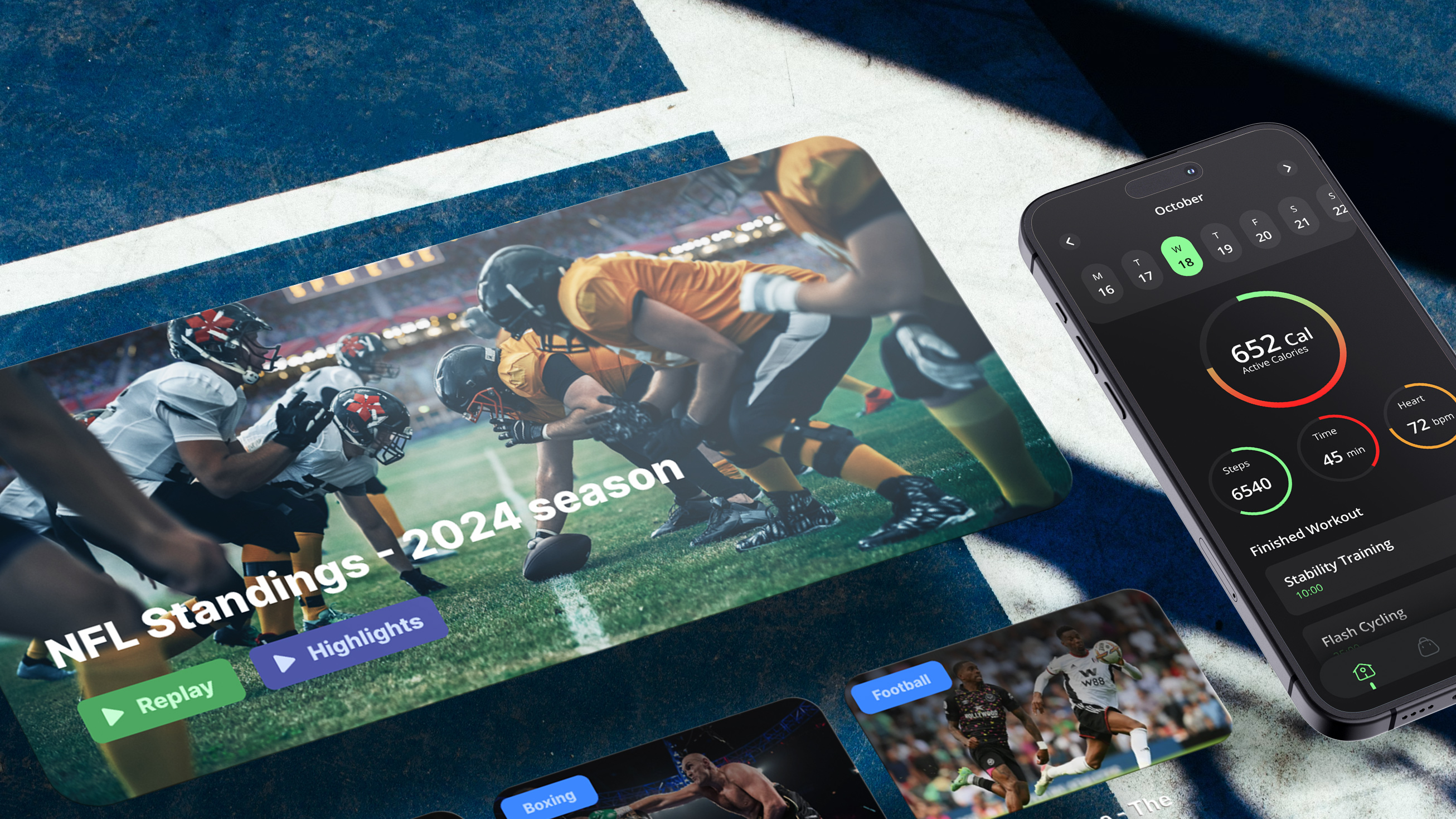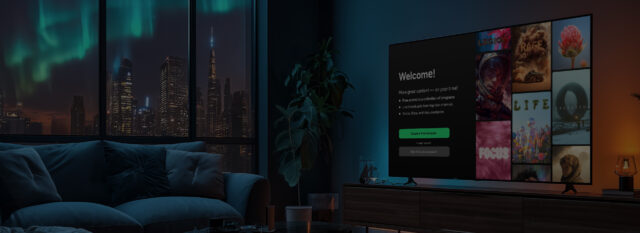OTT advertising keeps gaining ground as brands look for more targeted, measurable ways to reach viewers. For content distributors and aggregators acting as ad publishers, this creates both a challenge and a growth opportunity: how to make their inventory perform well enough to bring more brands on board — and keep them coming back.
Unlike traditional TV, OTT gives you the tools to optimize ad delivery, track detailed performance metrics, and offer advertisers precise audience targeting at scale. But simply having access to these tools isn’t enough — the real value lies in how you use them.
What is OTT in advertising, and why is it attracting so many brands? This article breaks down its key benefits and explains what you can do on the platform side to maximize ad effectiveness and grow your base of advertisers.
What advertising strategies work best for OTT platforms?
To attract more brands and unlock new revenue streams, content distributors and aggregators need more than just ad slots — they need a solid OTT advertising strategy that delivers results advertisers can measure and scale:
- One of the core components is CTV and OTT-enabled AdTech. With connected TV capabilities in place, your platform can support precise audience retargeting, frequency control, and real-time campaign tracking through metrics like VCR and GRP. This gives advertisers the transparency and control they expect from digital channels, while you gain the ability to sell inventory more efficiently.
- Another strategic layer is OTT header bidding. By integrating this approach, you open up inventory to multiple demand sources simultaneously, boosting competition, increasing CPMs, and improving fill rates. It also allows for more accurate audience segmentation — something brands value when aiming for campaign efficiency across programmatic channels.
- Then there’s AVOD monetization. When done right, ad-supported video on demand can deliver strong returns without driving away viewers. Server-side ad insertion helps ensure smoother ad transitions, while contextual ad placement — matched to the scene content — makes the experience feel less intrusive. Built-in ad quality controls further protect brand safety, which remains a top priority for many advertisers.
Successful case studies in optimizing OTT advertising
To illustrate how effective OTT marketing strategies can significantly boost monetization and attract more brand partnerships, let’s take a look at a few real-world examples. These case studies showcase how tailored ad solutions, advanced technology integrations, and smart monetization models helped OTT platforms optimize their ad offerings and meet the unique demands of advertisers.
Cross-platform ad insertion for a telco’s OTT service
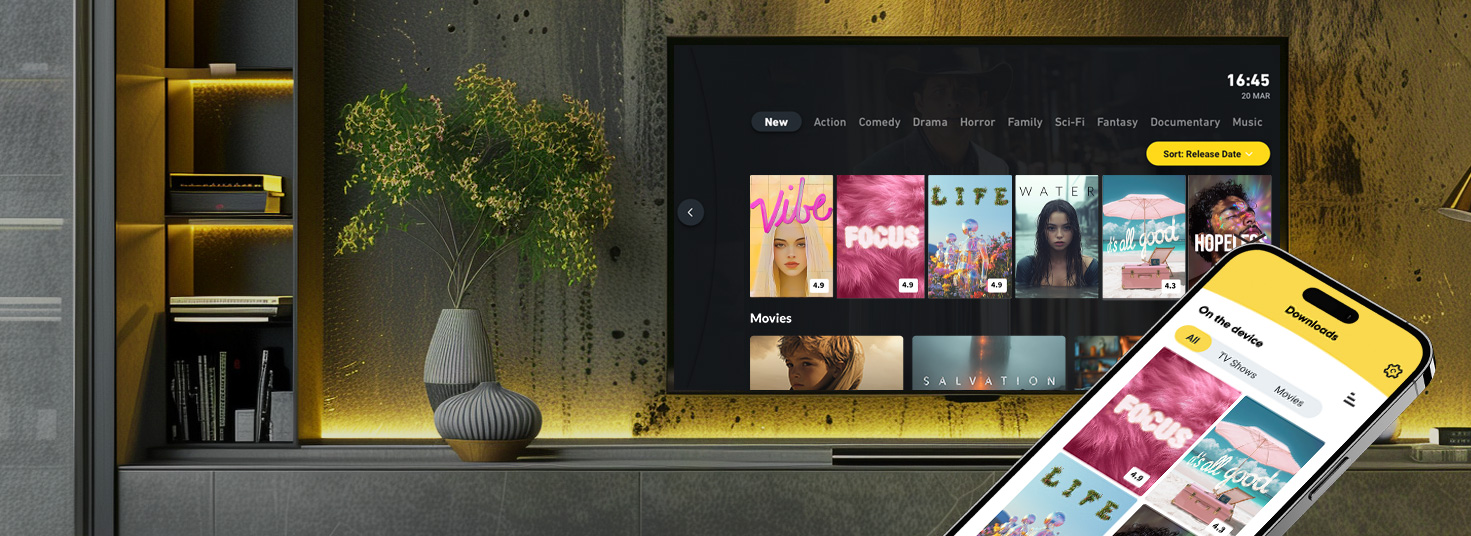
For one of our telecom clients, we developed a solution to seamlessly insert client-side ads across multiple screens, including web platforms, mobile devices, and Smart TVs. The solution ensured that ads were inserted at optimal points during live programming, allowing viewers to enjoy content without interruptions while keeping advertisers in control of ad delivery.
This streamlined approach increased ad performance and retention, leading to better engagement rates and higher demand for the ad inventory across platforms. It also provided advertisers with valuable insights into ad performance, contributing to more targeted and effective ad campaigns.
Video advertising and monetization platform for publishers and advertisers
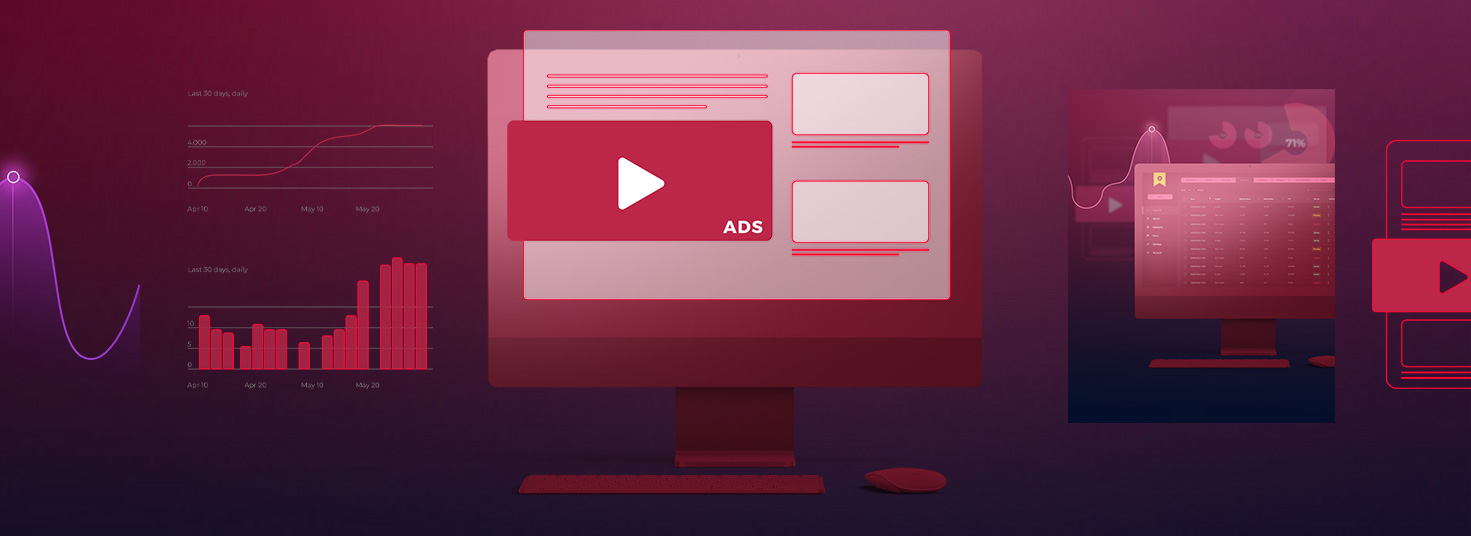
We designed a comprehensive video ad and monetization platform that empowered publishers to manage ad inventory with ease, while enabling advertisers to create and optimize high-performing campaigns. This platform integrated advanced audience targeting and robust reporting features, providing a transparent view of campaign success.
For OTT broadcasters, the platform’s ability to handle large volumes of ad inventory and offer VAST/VPAID support made it easier to attract major brands. As a result, both publishers and advertisers achieved better ROI, and ad revenues for the platform increased due to more efficient inventory management and campaign performance tracking.
Custom advertising module for a VoD platform
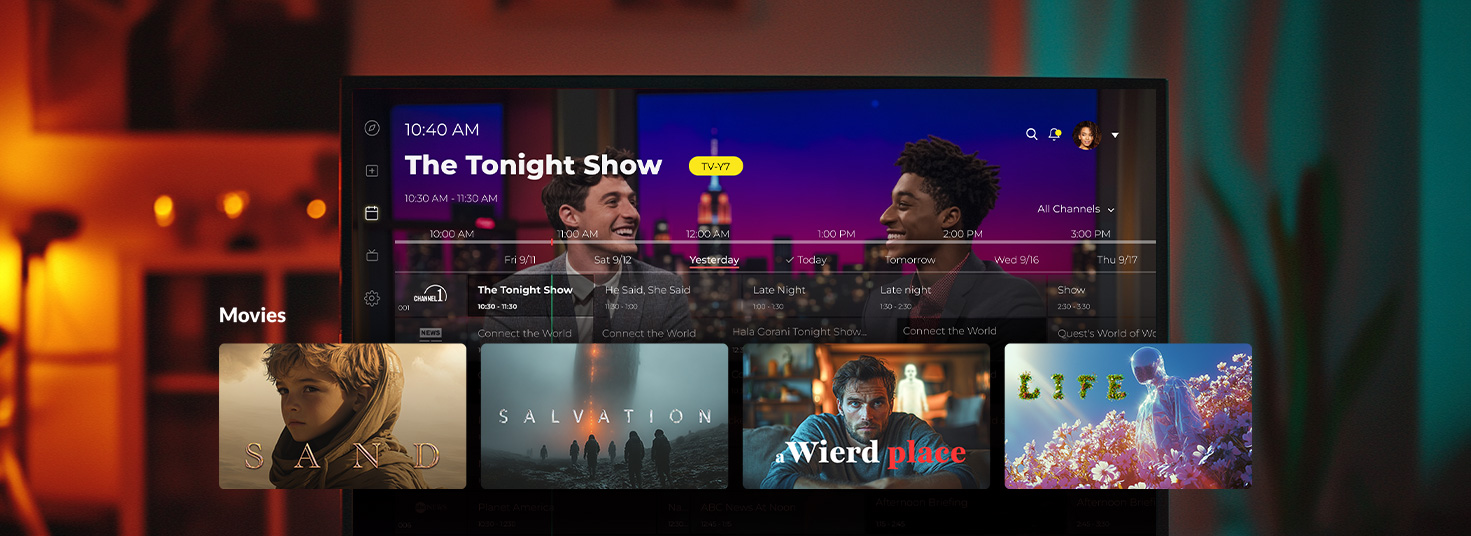
In a major upgrade of our telco client’s Video on Demand (VoD) service, we implemented a custom advertising module that gave the telecom operator full control over ad placements, targeting options, and scheduling. This module provided real-time performance analytics, allowing the client to optimize ad delivery and improve the overall viewer experience.
The improved ad system attracted more brands, especially those seeking precise targeting and reliable reporting, making the platform a more competitive player in the European OTT space. The project demonstrated how custom ad solutions can significantly enhance platform monetization and attract valuable brand partnerships.
AI-powered ad creative generation for efficient campaigns
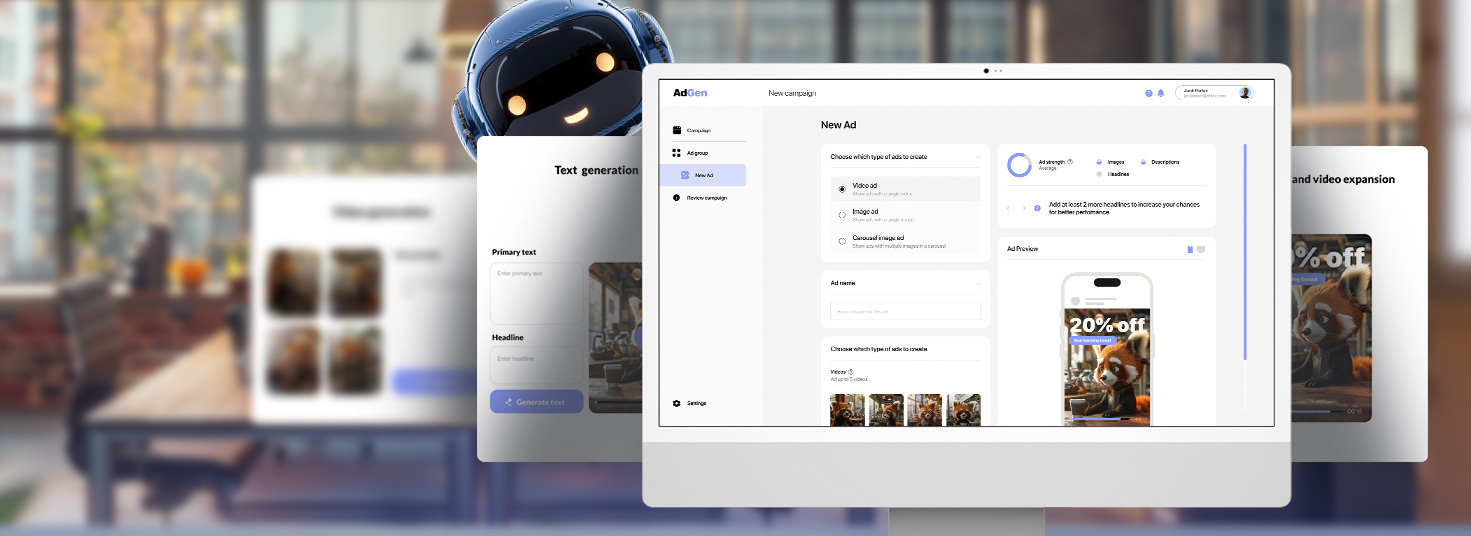
To address the challenges faced by marketers in managing and optimizing ad creatives, we developed an AI-driven tool that automates the creation of ad campaigns. By analyzing website content, extracting key keywords, and generating creatives on the fly, the tool helped marketers optimize targeting, bids, and creative performance in real time.
For OTT platforms, similar AI-driven solutions could reduce the manual work involved in ad creation and help scale campaigns more efficiently. By using AI to automate tasks like creative design and audience segmentation, OTT platforms can offer better value to advertisers, driving higher ad spend and stronger brand partnerships.
These OTT advertising examples highlight how strategic ad solutions can help platforms increase ad revenue, improve user engagement, and attract more brand partners. The next step for OTT broadcasters is to implement these proven tactics in a way that suits their unique audience and content offering.
Common challenges in optimizing OTT advertising
Even with a growing interest from advertisers, OTT publishers often face several roadblocks that can hinder performance and slow down the growth of brand partnerships.
Fragmented ad infrastructure
Many OTT platforms rely on a mix of third-party ad servers, data management platforms, and analytics tools that don’t always communicate well with each other. This fragmentation can lead to delayed ad delivery, targeting mismatches, and wasted impressions — especially across devices and content types.
Limited analytics and reporting transparency
Brands want to see how their campaigns perform in real time, including metrics like view-through rates, completion rates, and audience engagement. If your platform doesn’t provide this level of visibility, it’s difficult for advertisers to assess ROI and optimize spend — often leading them to look elsewhere.
Brand safety and ad quality control
When an ad appears next to inappropriate or off-brand content, it reflects poorly on both the advertiser and the platform. Without automated ad screening, content matching, and the ability to filter by advertiser category, OTT publishers risk alienating premium ad buyers.
Ineffective frequency and inventory management
Lack of smart ad frequency control can annoy users with repetitive ads and lower overall engagement. At the same time, underused or poorly segmented ad inventory results in missed revenue opportunities. Finding the balance between maximizing yield and maintaining viewer experience is a constant challenge.
Tips for more effective ad monetization
Even with a well-defined OTT business model in place, there’s always room to fine-tune your OTT marketing strategy. Here are several tips to help you get the most out of your ad inventory:
1. Don’t chase prime time
While it’s tempting to prioritize peak viewing hours (typically 8 PM to 11 PM), recent data shows that 72% of video consumption actually happens outside this window. Audiences are increasingly watching content on their own terms, and CPMs can vary significantly depending on the time of day. Smart scheduling that considers off-peak hours could deliver better ROI without overpaying for inventory.
2. Ad breaks aren’t a dealbreaker
A common fear is that longer ad pods will scare viewers away — but that’s largely unfounded. Roughly a third of ad pods on streaming platforms already last over 3 minutes, which is comparable to linear TV. The key is relevance and personalization: if the ads match viewer interests, they’ll tolerate and even engage with longer breaks.
3. Match your model to your content value
AVOD works well for low-cost or evergreen content where volume can drive ad impressions. Hybrid models — combining subscriptions with ads — help balance revenue predictability and reach. Meanwhile, TVOD is ideal for exclusive live events or one-off premium content with high perceived value. Avoid forcing a single model across all content types; instead, tailor your approach based on viewer behavior and content strength.
How custom and off-the-shelf solutions can help
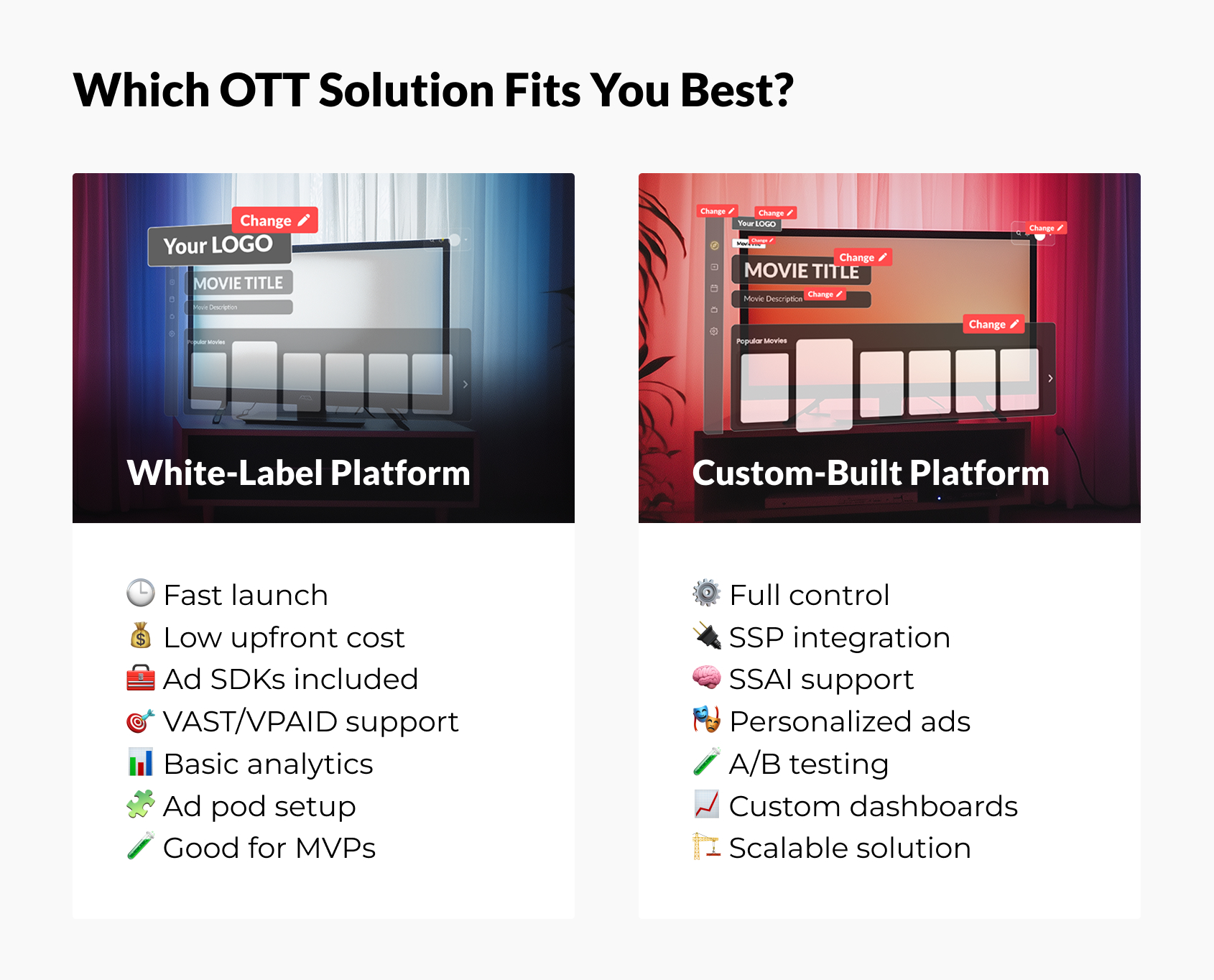
Choosing between a custom-built OTT platform and an off-the-shelf (white-label) solution has a direct impact on how effectively you can monetize your content. Both approaches offer benefits — but in different ways.
White-label platforms let you get to market fast and with minimal upfront investment. Most of them come with built-in advertising tools: ad SDKs, VAST/VPAID support, basic analytics, and ad pod configuration. This makes them a practical option for validating a business model or launching on a tight budget.
Custom-built platforms, on the other hand, give you full control over your monetization strategy and viewer experience. With a tailored solution, you can:
- Integrate multiple supply-side platforms (SSPs) and optimize ad mediation;
- Implement server-side ad insertion (SSAI) with minimal latency;
- Enable advanced ad experiences like personalization and interactivity;
- Build custom analytics dashboards to track ad performance in depth.
If you’re aiming for long-term revenue growth, scalability, and platform differentiation, a custom approach offers the flexibility and robustness to get you there.
Take a look at the top 5 OTT platforms to understand how different monetization strategies and feature sets can impact platform performance.
Maximizing OTT potential with the right development partner
To bring your OTT platform vision to life and ensure long-term success, partnering with an experienced development team is crucial. Oxagile’s expertise in custom video solutions, combined with our deep knowledge of AdTech, enables us to create tailored OTT applications that meet your specific needs. Whether you need an end-to-end OTT advertising solution or want to enhance an existing platform with powerful AdTech features, we provide the technical proficiency to boost ad-driven revenue and strengthen collaboration with advertisers.
Optimize your OTT platform
Oxagile helps you build and enhance OTT apps with customized solutions, including AdTech features tailored to your monetization goals. Let us help you create a seamless streaming experience for long-term success.

